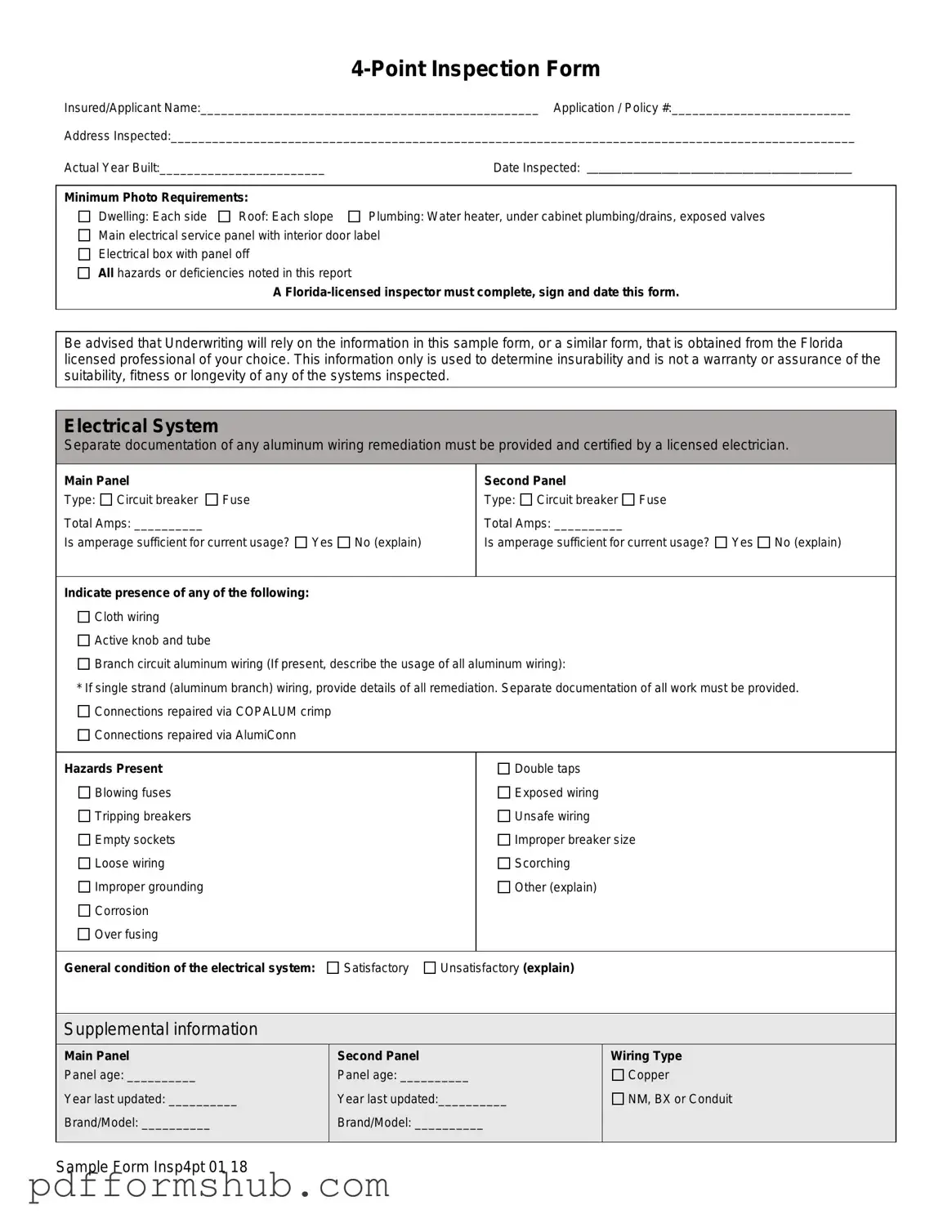The 4 Point Inspection Form is a crucial document for homeowners and insurance providers alike, serving as a comprehensive assessment of a property’s key systems. This form evaluates the condition of four main areas: the roof, electrical system, HVAC (heating, ventilation, and air conditioning), and plumbing. Each section requires detailed information, including the age and condition of the systems, any visible hazards, and necessary photographs to support the findings. For instance, the electrical section demands a thorough review of the main panel and any potential issues like aluminum wiring, while the plumbing section assesses the integrity of fixtures and the presence of leaks. It is essential that a licensed Florida inspector completes and signs this form, as underwriting relies heavily on the accuracy of the information provided. Not only does the form help determine insurability, but it also highlights any deficiencies that may need addressing before coverage can be secured. By understanding the importance of this inspection, homeowners can better prepare for the insurance process and ensure their property meets safety standards.
